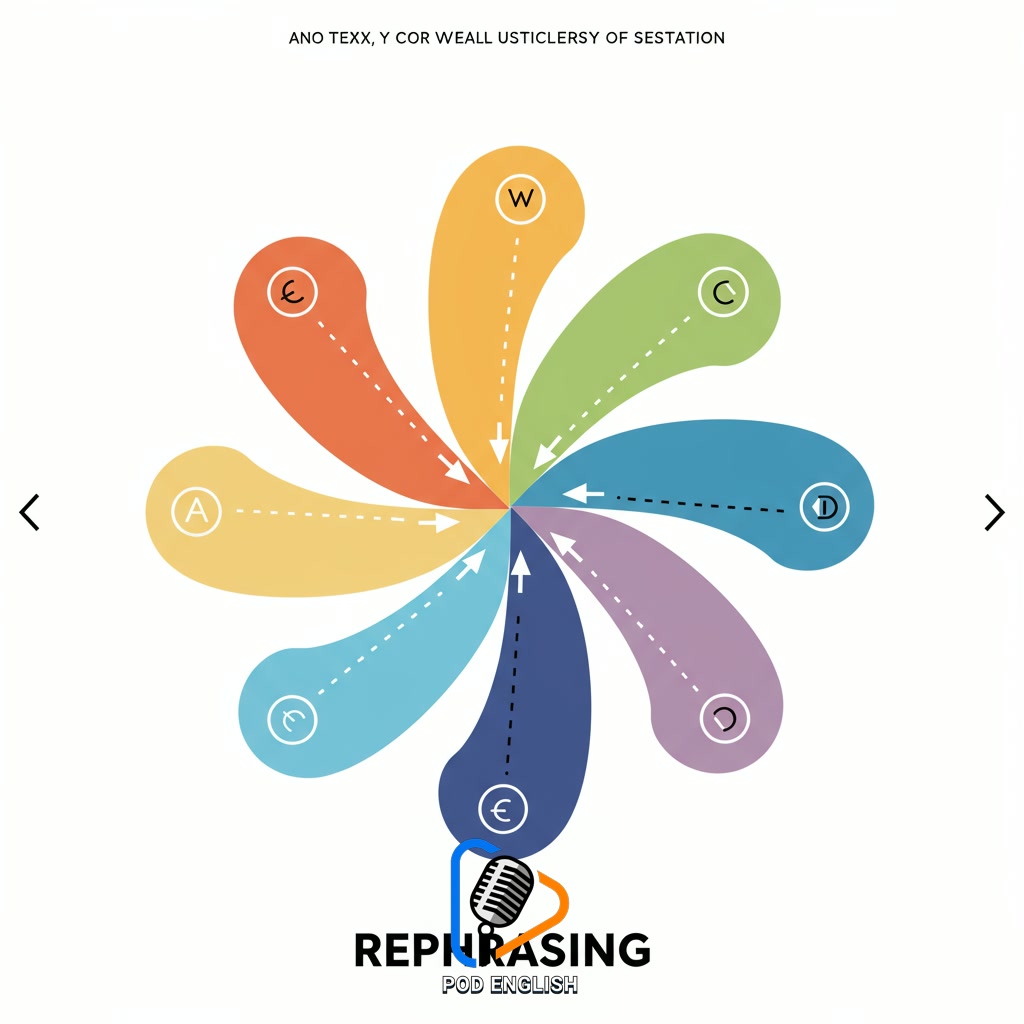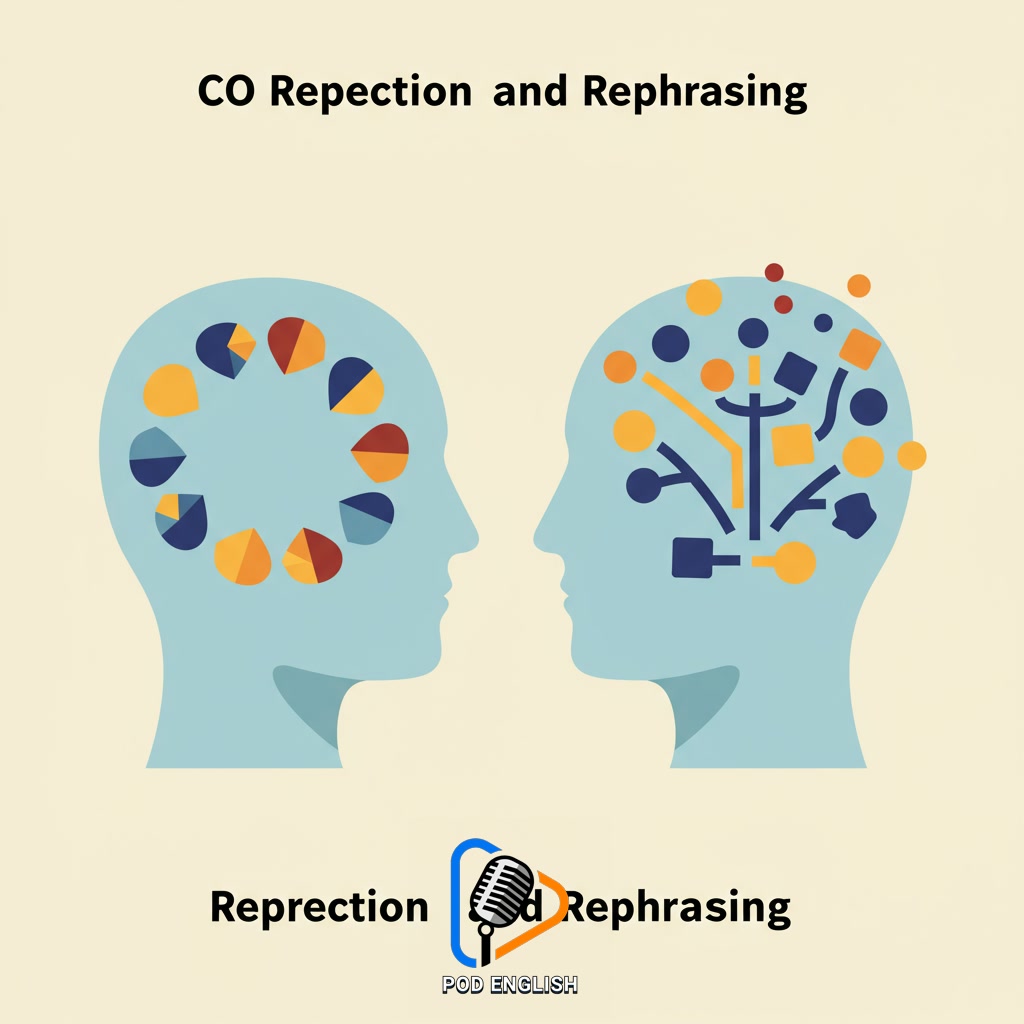Learn English
Learn English Effectively: Achieving Fluency Through Repetition and Rephrasing Practice

This content focuses on effective strategies for language acquisition. It emphasizes how practicing repetition and rephrasing can significantly enhance speaking and understanding skills. The core idea is to build fluency through consistent and structured practice methods. By actively engaging with the language through these techniques, learners can improve their ability to communicate naturally.
Table of Contents
- Section 1: Introduction: Why Repetition and Rephrasing are Keys to Fluency
- Section 2: The Science Behind Repetition for Language Acquisition
- Section 3: Mastering Rephrasing: Building Flexibility and Understanding
- Section 4: Practical Strategies for Implementing Repetition Practice
- Section 5: Effective Techniques for Rephrasing Exercises
- Section 6: Combining Repetition and Rephrasing for Optimal Results
- Section 7: Tracking Your Progress and Maintaining Motivation
Section 1: Introduction: Why Repetition and Rephrasing are Keys to Fluency
To become truly fluent in English, simply knowing grammar rules and vocabulary isn’t enough. You need to be able to use the language automatically and naturally in real conversations. This is where repetition and rephrasing become incredibly powerful tools. Repetition helps you internalize sentence structures and vocabulary, making them readily available for use without conscious effort. It’s like building muscle memory for language. Rephrasing, on the other hand, teaches you flexibility – how to express the same idea in different ways, understand subtle nuances, and adapt your language to different contexts. By actively practicing both repetition and rephrasing, you strengthen your command of English, improve your listening comprehension, and build the confidence needed to communicate fluently and effectively.

Introduction: Why Repetition and Rephrasing are Keys to Fluency
Section 2: The Science Behind Repetition for Language Acquisition
Repetition is not just rote memorization; it’s a fundamental process deeply rooted in how our brains learn and solidify information. When you repeat a word, phrase, or sentence multiple times, you are actively strengthening the neural pathways associated with that language element. Think of it like walking a path through a forest; the more you walk it, the clearer and easier it becomes to navigate. Similarly, repeated exposure and production of language make recalling and using it faster and more automatic. This process helps move information from your short-term working memory into long-term memory, making it readily available for spontaneous use in conversation. This automaticity is key to achieving fluency, allowing you to focus on communicating your message rather than consciously searching for words or grammar rules.

The Science Behind Repetition for Language Acquisition
Section 3: Mastering Rephrasing: Building Flexibility and Understanding
While repetition builds foundational recall, mastering English fluency also requires flexibility. This is where rephrasing comes in. Rephrasing involves expressing the same idea using different words, sentence structures, or grammatical forms. Practicing this skill significantly enhances your understanding of nuances in meaning and helps you adapt your language to various situations and audiences. Instead of being limited to one way of saying something, rephrasing allows you to choose the most appropriate words and structures, making your communication more natural and effective. It’s like having a toolbox of linguistic options for every idea. Regularly rephrasing sentences you read or hear, or even your own thoughts, is a powerful way to solidify vocabulary and grammar while building the agility needed for spontaneous conversation. This active manipulation of language deepens comprehension and boosts confidence.

Mastering Rephrasing: Building Flexibility and Understanding
Section 4: Practical Strategies for Implementing Repetition Practice
Implementing effective repetition practice is crucial for solidifying language skills. Start by choosing authentic audio materials like podcasts, videos, or dialogues. Listen carefully to short segments, perhaps a sentence or two, then pause and repeat exactly what you heard, focusing on pronunciation, intonation, and rhythm. This technique, often called ‘shadowing’ when done simultaneously, helps train your mouth and ears to the sounds of English. Another strategy involves using flashcards, not just for single words, but for entire phrases or sentences. Regularly review these, saying them aloud repeatedly. You can also record yourself speaking the phrases or repeating sections of audio and compare it to the original, identifying areas for improvement. Consistent, focused repetition builds muscle memory for language and prepares you for the flexibility required in rephrasing.

Practical Strategies for Implementing Repetition Practice
Section 5: Effective Techniques for Rephrasing Exercises
Building upon effective repetition, rephrasing exercises are vital for developing linguistic flexibility and deeper understanding. Rephrasing involves expressing the same idea or meaning using different words, sentence structures, or grammatical forms. This technique helps you move beyond simply mimicking phrases and encourages you to actively manipulate the language. Start by taking sentences or short passages from your listening or reading practice. Try to convey the original meaning by substituting synonyms, changing active voice to passive (or vice versa), combining or separating clauses, or simplifying complex expressions. Practicing rephrasing enhances your vocabulary recall, improves your grasp of grammar, and prepares you to express your own thoughts naturally and fluently in various ways.

Effective Techniques for Rephrasing Exercises
Section 6: Combining Repetition and Rephrasing for Optimal Results
Building upon effective repetition, rephrasing exercises are vital for developing linguistic flexibility and deeper understanding. Rephrasing involves expressing the same idea or meaning using different words or sentence structures. The most powerful approach for achieving fluency is to combine these two techniques. Start by repeating sentences or phrases multiple times to build muscle memory and rapid recall. Once the structure and vocabulary are firm, practice rephrasing the same sentence in several different ways. This dual practice reinforces pronunciation and vocabulary while simultaneously training your brain to think flexibly and access alternative expressions, allowing you to communicate naturally and adapt to various situations.

Combining Repetition and Rephrasing for Optimal Results
Section 7: Tracking Your Progress and Maintaining Motivation
Once you’ve integrated repetition and rephrasing into your English learning routine, understanding how far you’ve come is crucial for sustained effort. Tracking your progress provides tangible evidence of improvement, which is a powerful motivator. Simple methods like keeping a language journal, using checklists for completed study sessions, or periodically recording yourself speaking can reveal significant growth over time. Seeing this development, perhaps noticing that you can now rephrase ideas more smoothly or understand longer sentences, reinforces the value of your practice and encourages you to continue. Setting small, achievable goals and celebrating their completion also plays a vital role in maintaining momentum and enthusiasm as you work towards fluency in English.
Tracking Your Progress and Maintaining Motivation













